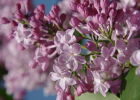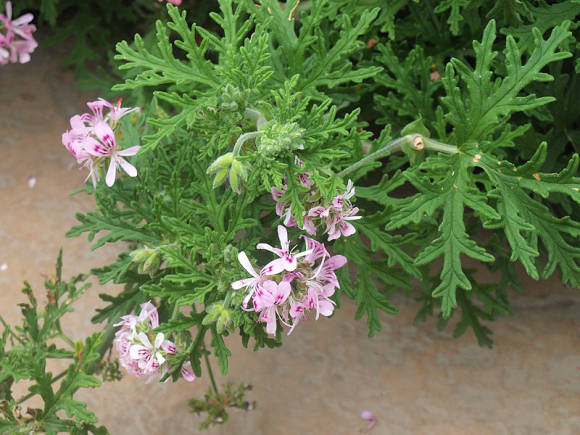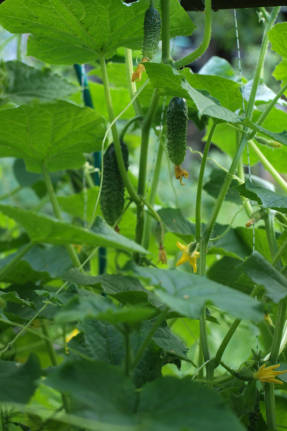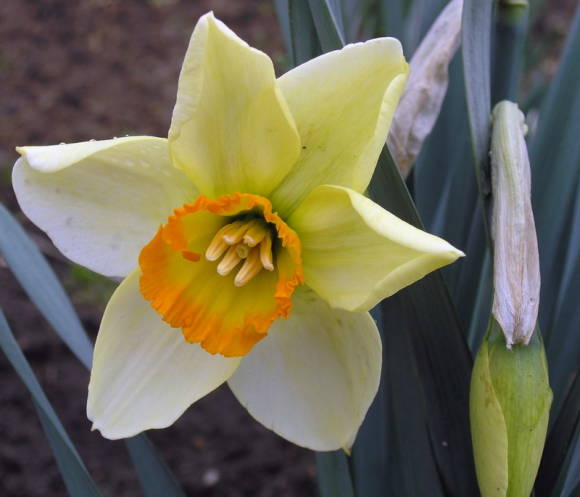 How to dignify a plant is a matter of taste. While some see a lion's mouth in a flower and call it snapdragon, others call it "dogs", while the British see a dragon and "christen" the plant snapdragon, that is, "biting dragon". Botanists believe that the flower looks like a nose and is called antirrinum from Greek words anti - similar and rhinos - nose.
How to dignify a plant is a matter of taste. While some see a lion's mouth in a flower and call it snapdragon, others call it "dogs", while the British see a dragon and "christen" the plant snapdragon, that is, "biting dragon". Botanists believe that the flower looks like a nose and is called antirrinum from Greek words anti - similar and rhinos - nose.
The genus has about 50 species that grow in the Mediterranean, Asia and America. But since 1567, only one species has been used in floriculture. big antirrinum (Antirrhinummajus), which grows wildly in Southern Europe and North America. It is a perennial plant, used as an annual in floriculture, but in regions with warm winters it can grow as a biennial. Stems are straight, branched. Shoots are round, green, reddish in dark-colored varieties, smooth in the lower part, covered with glandular hairs in the upper part. The lower leaves are lanceolate to elongate-oval, opposite, the upper leaves are in the next order. Corolla is spine-lobe, two-lipped, with a saccular bulge at the base. The upper lip is bilobate, depending on the variety, smooth or wavy, the lower lip is three-lobed. The flowers are quite large, collected in a racemose inflorescence. Especially interesting are varieties with open flowers, which are double (butterfly) and simple. The color of the flowers is varied: white, yellow, pink, dark red, all kinds of shades and two-tone. Blooms from June to frost. Duration of flowering of one flower is up to 12 days, for the whole plant - up to three months. The fruit is a polyspermous capsule. Seeds are small, viable for up to 4 years.
Breeding work began in the 19th century in Germany. Today there are over 800 varieties that are often combined in series. Varieties by height and flower size are subdivided into: large-flowered high, up to 100 cm; large-flowered semi-high - 50-70 cm, low - 40-50 cm; low compact - 20-30 cm; small-flowered dwarf - 15-20 cm. In catalogs, varieties are most often arranged in height. But than to name countless varieties, it is better to show the most interesting of them with an unusual flower shape, growth shape and leaf color.
Snapdragon is loved by all growers, as it is a very decorative and not too capricious plant. For good growth and abundant flowering, he needs fertile, light soil, periodic feeding. The main requirement is abundant watering, especially in dry and hot seasons. However, with excessive moisture, he gets sick and dies. The plant is light-loving, cold-resistant, tolerates frosts down to -5 ° С. Snapdragon is propagated by sowing seeds in March. Seeds germinate very slowly, at a temperature of + 20- + 22 ° C, seedlings appear only on the 10-14th day. The seeds need light to germinate, so do not sprinkle them with soil. Seedlings dive into pots of 3 plants. In the first week after picking, seedlings are very sensitive to excess moisture in the soil, so it is better not to water them, but spray them from a spray bottle. The first feeding with full mineral fertilizer is carried out 7-10 days after the pick, the second - after 10-12 days. If you have planted a mixture of varieties, then already at the germination stage you can distinguish dark-colored varieties from light-colored ones, since in dark varieties the leaves and stem are dark green or even reddish, and in light varieties they are light green. Seedlings are planted in mid-May with an interval of 20-30 cm. Before planting, the soil must be well watered. Depending on the period between the emergence of seedlings and the beginning of flowering, varieties are divided into early varieties, which bloom after 80-85 days, medium - 95-100 days and late - 110-120 days. In order to prolong flowering, it is necessary to regularly remove faded inflorescences.
 If you decide to harvest seeds from your plants, remember that mostly hybrids grow in gardens. Therefore, seedlings grown from their own seeds do not necessarily repeat the best parental qualities.
If you decide to harvest seeds from your plants, remember that mostly hybrids grow in gardens. Therefore, seedlings grown from their own seeds do not necessarily repeat the best parental qualities.
In addition to seeds, snapdragons are propagated by cuttings, which are easily rooted in the sand. This method is used very rarely, only when breeding some terry forms.
Snapdragon, especially seedlings, is strongly affected by fungal diseases: blackleg, septoria and powdery mildew. Therefore, avoid overly thickened plantings, and when watering, try to keep water out of the leaves. Remove affected plants immediately.
Flower growers use snapdragons for planting in the garden and for landscaping balconies. In apartments, on the windowsill, you can have a flowerpot or pot with several plants of a blooming snapdragon. In recent years, cuttings of tall varieties have begun to come from Holland. It turned out that cut plants stand in water for 7-14 days and all the buds bloom. It is better to take plants with the first blossoming buds from your garden for cutting. And if, due to weather conditions, the seedlings have not bloomed, do not be discouraged. Feel free to dig up "bushes" with buds, plant them in a pot and take them home. These plants will certainly bloom and will delight you for a long time.
Olga Signalova, candidate of biological sciences









